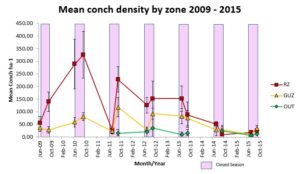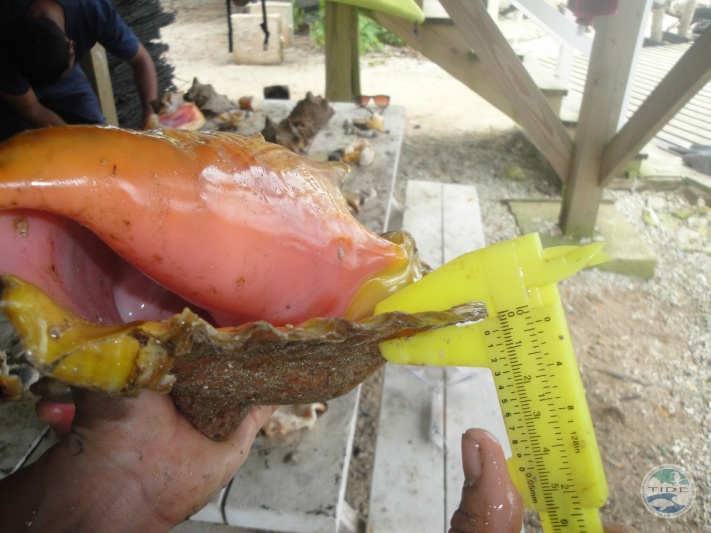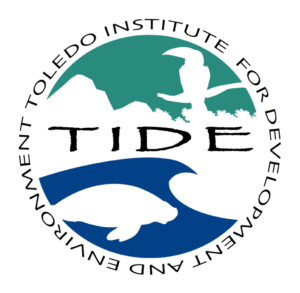Queen conch, Lobatus gigas, is a species of high commercial importance in Port Honduras Marine Reserve (PHMR). It was once abundant throughout the Caribbean, but as a popular seafood dish it has become overfished in much of its range. Despite management of the fishery within PHMR (a joint effort between the Belize Fisheries Department and TIDE), the population has declined dramatically since 2013, as seen in Fig. 1.

Fig. 1: Mean conch density (number of conch per hectare of area surveyed) for Replenishment Zones and General Use Zone within PHMR, and outside of PHMR, from 2009 to 2015
Current regulations on conch harvesting in PHMR consist of a closed season (1st July to 30th September), a minimum shell length of 178 mm (7 inches) or minimum meat weight of 85 g (3oz), and a ban on use of SCUBA while harvesting. Size limits are a key tool for fisheries sustainability. They are usually set equal to, or slightly above, the known size at sexual maturity, with the intent of protecting individuals until they have had a chance to reproduce, assuming this will return a sustainable supply of new recruits to the population.
While data shows fishers comply with the shell length limit, density is not recovering, suggesting the current size limit may not be protecting juvenile conch. Recent research in other parts of the Caribbean indicates shell lip thickness may be a better indicator of sexual maturity in conch than shell length. Stoner et al. (2012) determined that male and female queen conch in the Bahamas reached sexual maturity when their shell lips were 9 mm or 12 mm thick, respectively. Shell length and lip thickness can vary by region, however, depending on water quality and differences in diet. Therefore, local research needs to be conducted to determine relationships between maturity and both lip thickness and shell length in PHMR.

Conch lip thickness, measured here with calipers, is the thickness of the shell at the lip
This is the aim of TIDE’s study. Queen conch were collected from the different management zones of PHMR in three phases during 2015: phase I (late open season) February – March 2015; phase II (closed season) July – August 2015; and phase III (early open season) November – December 2015. In each phase shell length, lip thickness, total weight, gonad weight and sex, among other measurements, were recorded. Gonad tissue samples were collected and analyzed under microscope to determine maturity. Statistical analyses detect relationships between parameters measured and sexual maturity.
All fieldwork has now been completed and data analysis is underway. Preliminary results indicate lip thickness to be a more reliable indicator of sexual maturity, at least in males. Results during the reproductive season will clarify relationships for females. It is expected that final results will enable maturity for PHMR male and female conch to be confidently estimated using lip thickness alone, and potentially market clean weight also. Findings will be shared with PHMR fishers and the Belize Fisheries Department to improve harvest regulations and increase sustainability of the fishery in PHMR. Identifying the most reliable way for fishermen to estimate maturity of conch at sea ensures they only remove those individuals that have reached sexual maturity, safeguarding a sustainable harvest for years to come.
